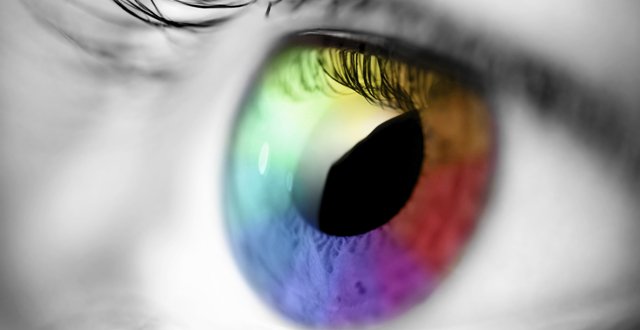
Dr Muiris Houston writes about the challenge of being a colour-blind doctor and the meaning colours have in different cultures
Does it matter if a doctor is colour-blind? I can think of a few situations where it might be a challenge. For instance, when your patient describes a tablet by its colour but with no hint of a name. And at a time when the dispensing of generic versions of drugs can change monthly, there is research suggesting the shape and colour differences between branded and generic drugs could be contributing to non-adherence. The Harvard study found that changing the colour of tablets contributed to people with epilepsy stopping their medication.
What
about dermatology? How convincing can a colour-blind doctor be when they talk
to colleagues about ‘a reddish maculopapular rash affecting upper limb
extremities’?
Well,
as a colour-blind MD myself, perhaps I can shed some light on what it takes to
circumnavigate these difficulties. Discovering I was colour-blind in
second-year med was a heart-stopping experience. It was during a microbiology
laboratory session — the first one in which we looked at specimens dyed with
gram stains.
I set
up my slide and peered down the microscope. My peers on either side were making
approving sounds as they identified the appropriately-coloured bugs. But I
could see nothing!
Initially,
the embarrassment kept me quiet. But when the second set of slides were equally
black and white, I called over a technician. He disappeared for a few minutes
before returning with an invitation to go the microbiology professor’s office
upstairs.
With
visions of my medical career coming to an end that afternoon, I trudged wearily
up the stairs. The prof, whom I had never met before, seemed quite friendly.
Without saying anything, he asked me to sit down at a table where a book was
opened. It contained pages of coloured dots, some of which appeared as numbers.
He asked me to go through each page and tell him what number I was seeing on
each. There were several in which I could discern absolutely no number
whatsoever — something that only served to increase my anxiety levels further.
Anyway,
after I turned the final page, he sat down beside me and announced that I was
red-green colour-blind. Seeing the panic in my face, he quickly reassured me
that this was not a career-ending discovery. He told me that I would learn to
compensate by identifying shapes rather than colours on the microbiology
slides. And just I was leaving his office, he put his hand reassuringly on my
shoulder and said: “I’ll let you in on a secret, but you mustn’t tell anyone
else — I’m colour-blind and it didn’t stop me becoming professor of
microbiology.”
Discovering I was colour-blind in second-year med was a heart-stopping experience
It was
brilliantly pitched and worked a dream. I skipped down the steps to the
laboratory without a care in the world.
Since
then, I’ve been heartened by several articles pointing out that we each
perceive colour in a different way. A lot of our colour perceptions are related
to feelings.
An Oxford Dictionary blog has some interesting insights: Crimson signifies
a variety of strong emotions — from love, to embarrassment, to anger.
English-speakers aren’t the only ones seeing red; in France, you might be rouge de colére (‘red with anger’), while in Romania, you could
find yourself a vedea roșu în fața
ochilor (literally,
‘seeing red in front of your eyes’).
English
isn’t the only language that uses red in a financial sense. If you discover you
are ‘in the red’ before your next pay packet, your European cousins will
understand. Italian, Spanish and
Portuguese are just a handful of the languages that use a similar phrase to
describe a negative bank balance. In the Netherlands’ there is a slight
variation — when you’re broke, you say geen rode cent meer hebben (‘to not have a red cent’).
In the
West, we speak of cowardice in terms of the colour yellow, as in ‘you’re a
lily-livered yellow-belly’. In Buddhism, yellow has far more positive
connotations: It is a symbol of humility, and thus the colour of monks’ robes.
In Germany, however, yellow is associated with envy.
If red
and green are my nemeses, then blue is a favourite colour. In Italy, they
clearly distinguish two blues: Blue and azzurro. As well as describing the most
majestic seascapes, blue represents the privileged hue of the aristocracy.
Meanwhile,
violet seems to capture the colour of violence. Dutch people have been known to
turn purple with rage (paars aanlopen van
woede), as have
Portuguese speakers (ficar roxo de raiva). It’s also the colour of bruises in
some cultures, so that in Spain, you might get a ‘purple eye’ (un ojo morado) rather than a black eye, while in Vietnam, tim (purple) means bruise.
But back to
my colour-blindness. Although officially red-green, in practice I cannot
distinguish most shades of green and brown. It hasn’t been a problem medically,
but somewhere the person who sorts out our local bottle bank must be none too
pleased: ‘Who is the idiot who arbitrarily fires green/brown wine bottles into
the collection point on a regular basis?’ If you’re reading this, please accept
my apologies.





Leave a Reply
You must be logged in to post a comment.